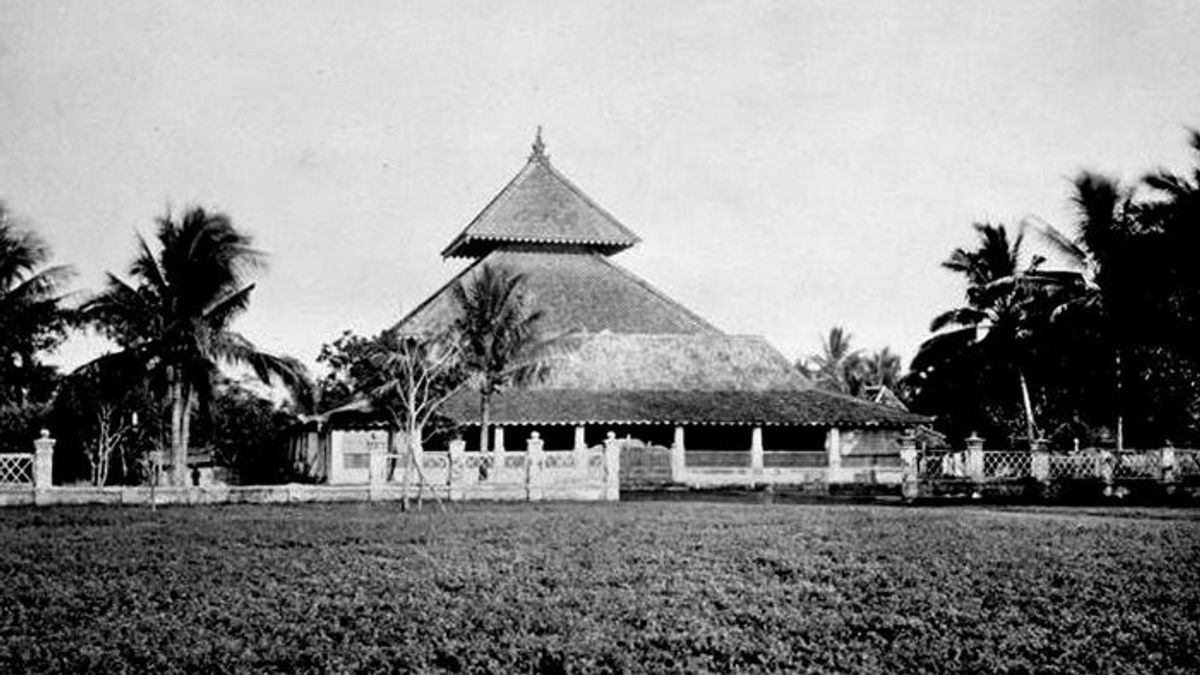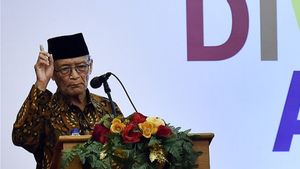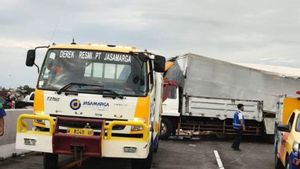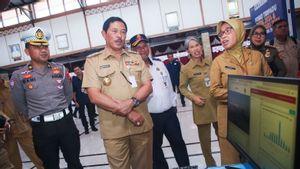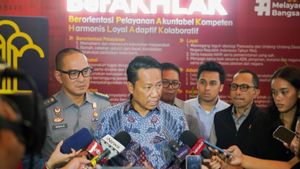JAKARTA - The Sultanate of Demak is one of the most important kingdoms on the island of Java. Before standing alone, this kingdom took shelter under the territory of Majapahit. When the kingdom which was centered in East Java collapsed, Demak and other areas broke away.
Demak became the forerunner of the Islamic empire in Java and the archipelago. In a history book written by Nana Supriatna, it is called the Demak Kingdom which began to exist in the early 16th century. Its founder is Raden Patah, a crown prince of Majapahit.
Raden Patah is the son of the Last King of Majapahit Brawijaya V from an empress named Siu Ban Ci. Mrs. Raden Patah, of Chinese origin, who has embraced Islam.
Raden Patah or who has another name Raden Bagus Kasan, led the Demak Kingdom from 1500 to 1518 AD. Given the title Panembahan Jin Bun comes from the Chinese language which means strong person.
In the hands of Raden Patah's leadership, the Demak Kingdom became a center for the spread of Islam in Java, namely through the influence of Wali Songo. Wali Songo went from village to village, from area to area to teach Islam.
After Raden Patah's leadership, the Demak Kingdom experienced several periods of changing kings. His territory is also expanding, covering along the north coast of Java Island.
Kings of Demak
The Demak Kingdom was once ruled by five kings. Each king has a different leadership character. Each period there was also a different political turmoil.
Raden Broken
Raden Patah sat on the great throne of the Demak Kingdom from 1500-1518. The founder of the kingdom was able to bring Demak to experience rapid development.
One of his successful careers was carrying out the massive spread of Islam in Java, through the role of Wali Songo. During the reign of Raden Patah, the kingdom's territory was getting wider.
The areas under Demak's territory include Pati, Rembang, Jepara, Semarang, the Karimata Strait, and several areas in Kalimantan that are part of its territory. Apart from that, important ports were also under his control, such as the ports of Jepara, Gresik, Tuban, Sedayu and Jaratan.
Starch Unus
In 1518, Raden Patah died. The throne of the Demak Kingdom was inherited by his son, Pati Unus. Pati Unus is known as a brave and tough warlord.
Pati Unus had a difficult mission, which was given the mandate of his father to free Malacca from Portuguese rule. The voyage of the Demak Kingdom was also quite threatened by the porting of the Portuguese in the archipelago.
Pati Unus departed gallantly to fight with the Portuguese. But his troops were out-armed. Not broken, the Demak crown prince then blocked Portuguese access. These efforts succeeded in making the Portuguese run out of food.
Thanks to this brave act, Pati Unus was nicknamed Pangeran Sabrang Lor. Pati Unus led the Demak Kingdom from 1518 - 1521. In 1521, he died in a battle in Malacca.
Sultan Trenggono
Because Pati Unus had no children, the leadership of the Demak Kingdom was then held by his younger brother, Sultan Trenggono. Sultan Trenggono led the kingdom from 1521 - 1546.
When controlled by Sultan Trenggono, the Demak Kingdom reached its heyday. Sultan Trenggono was known as a leader who was wise and had great courage. He succeeded in making the territory of the Demak Kingdom even wider, reaching West Java and East Java.
Sunan Prawoto
King Demak was later replaced by Sunan Prawoto, son of Sultan Trenggono. During the leadership of Sunan Prawoto, the Demak Kingdom was in a decline phase.
During this period, the old conflict between Prince Surowiyoto and Sultan Trenggono heated up. The feud between the two brothers continued until it affected Sunan Prawoto.
Prince Surowiyoto was later killed by Sunan Prawoto by the side of a river. This incident earned Prince Sekar Sedo ing Lepen the nickname of Prince Surowiyoto.
Arya Penangsang
Sunan Prawoto was not in power for long. In 1547, Arya Penangsang killed the king. Arya Penangsa is the son of Pengeran Sekar. After that, he rose to become the fifth king of Demak.
Arya Penangsang's leadership did not last long. His followers killed Prince Hadiri or the Ruler of Jepara, the husband of Queen Kalimanyamat. Since that incident, the dukes under Demak rejected Arya Penangsang.
The Duke of Pajang, Jaka Tingkir (Hadiwijaya), became one of the parties in the conflict with Arya Penangsang. Adipati Pajang staged a rebellion to take over the power of the Demak Kingdom in 1554.
Not in the hands of Adipati Pajang, the death of Arya Penangsang was in the hands of Sutawijaya, Jaka Tingkir's adopted son. The Demak Kingdom stepped down after the killing of Arya Penangsang. Jaka Tingkir then founded the Pajang kingdom and shifted the center of government there.
Legacy of the Demak Kingdom
During its reign, the Demak Kingdom left many relics, both objects and non-objects. These relics are scattered in several regions in Central Java.
Demak Great Mosque
Demak Great Mosque was founded in 1479 AD. One of the old mosques in Indonesia is located in Kauman, Demak, Central Java. Raden Patah founded this mosque with Walisongo.
In the 15th century, this building became a place for scholars, and a center of learning. Even though it is quite old, this mosque is still active today. Many tourists who come from within the city and outside the city who come for worship or pilgrimage.
The architecture of the Great Mosque of Demak is thick with Javanese cultural ornaments. The appearance of the building is very artistic. The interior uses wood materials accompanied by carvings.
In the area of the Great Mosque of Demak, there is a museum that archives the history of the Demak Mosque. Raden Patah was also rested in this mosque complex. This meal made many people flock to pilgrimages.
Tomb of Sunan Kalijaga
Another legacy of the Demak Kingdom is the tomb of Sunan Kalijaga, one of the Walisongo. Sunan Kalijaga played a big role in the spread of Islam in Java, especially in Central Java.
During the distribution period, Sunan Kalijaga visited many places. He has the same mandate as the regional head, who oversees several villages. In this position, he has the authority to regulate all village affairs.
The existence of the tomb of Sunan Kalijaga has invited many people to come to Demak for pilgrimage. Many people pray, and take care of themselves.
Lawang Bledek
Lawang Bledek is a lightning door located at the Great Mosque of Demak. On the door there is a carving depicting a strange creature, which is said to be a form of lightning or bledek.
Ki Ageng Selo was the person who carved the door in 1466 AD According to a history, a character who was famous for being able to catch this lightning designed the door using his supernatural powers.
Ki Ageng gave the door to Raden Patah to be installed as the main door of the Great Mosque of Demak. Due to his old age, the door is no longer installed. The door is stored in the mosque museum.
Soko Guru
Soko guru or soko tatal is the pillar of support for the Great Mosque of Demak. The poles are 4 in the form of wood. The manufacture of these poles was carried out by Sunan Kalijaga, Sunan Jati, Sunan Ampel, and Sunan Bonang.
The teacher's pillar is symbolized as harmony or unity. Meanwhile, its location in the middle of the mosque has the meaning of strength. Due to its old age, renovations have been carried out on some of the mosque's materials.
Stay up to date with the latest domestic and foreign news on VOI.
The English, Chinese, Japanese, Arabic, and French versions are automatically generated by the AI. So there may still be inaccuracies in translating, please always see Indonesian as our main language. (system supported by DigitalSiber.id)
